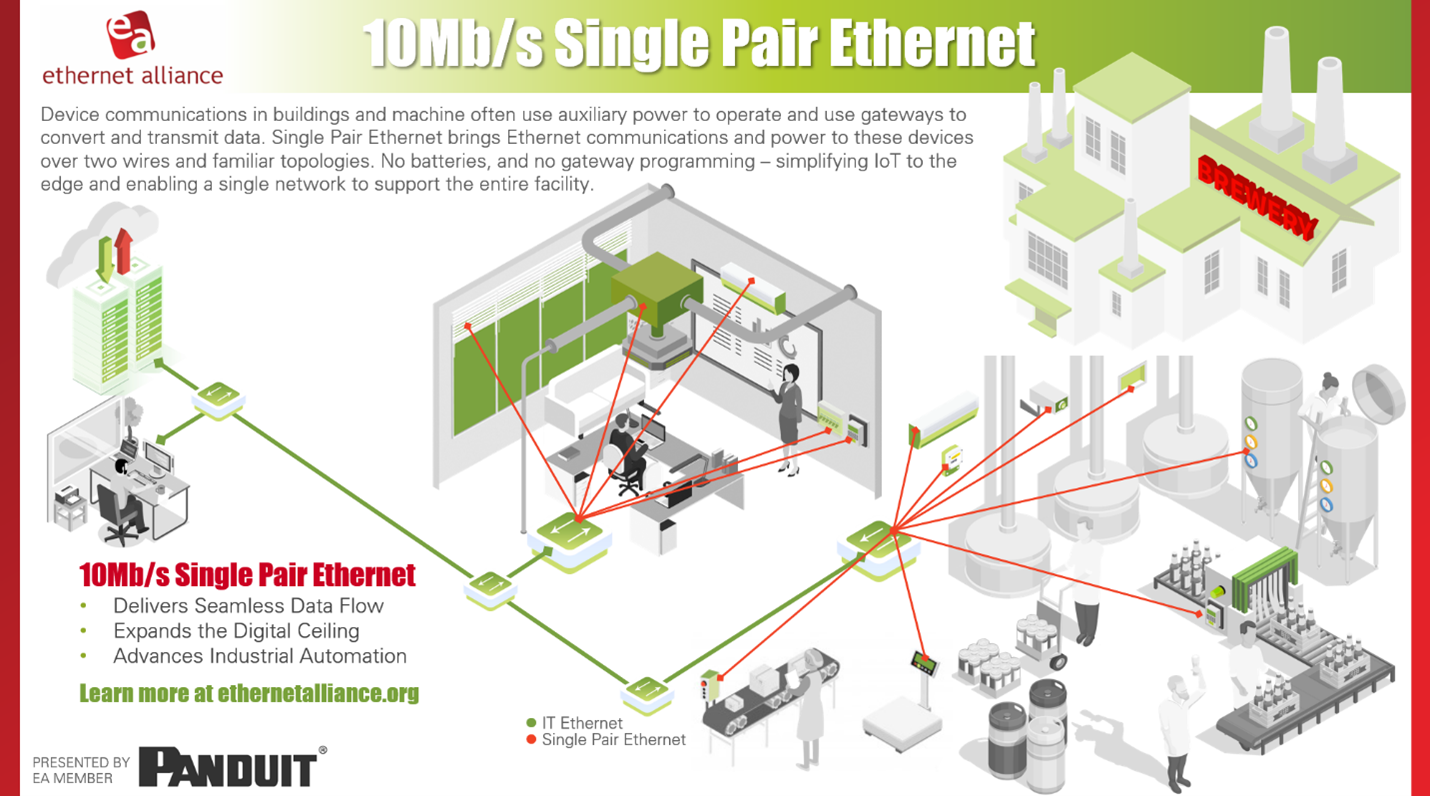The Promise of Single Pair Ethernet
It’s been a while since I’ve taken over the helm as chair of the Ethernet Alliance Single Pair Ethernet (SPE) Subcommittee, a subcommittee of experts who are busily creating content about SPE. Happily, there has also been great industry progress. The truly exciting part, is that the ink’s not even dry yet on the original SPE standard – IEEE 802.3cg™ – and we’re already  working on the expanding its footprint.
working on the expanding its footprint.
Organizations like TIA and ODVA are diligently crafting standards so the industry can implement SPE effectively from a physical and logical perspective. Ethernet-APL (Advanced Physical Layer) is SPE adapted for the Process Industry. It shows all the signs of becoming an absolute juggernaut. Industrial and Building Automation experts are finding clever ways to advance their smart factory and smart building agendas using SPE. Industry 4.0 and IoT experts are also examining the ways SPE can help their cause.
Exploring New Opportunities with SPE
The industry has just begun to understand what SPE is, and in doing so has begun to contemplate what may be possible with SPE. Frankly, it’s a great time to be having those thoughts.
- IEEE has formed a new task force, IEEE P802.3da™, to take on the next SPE challenge – enhanced multidrop. I know what you’re thinking. Enhanced multidrop? IEEE 802.3cg does multidrop. And you’re right, it does and I consider that a good start. Multidrop provisions in IEEE 802.3cg are enabling important applications in automotive and industrial automation already. However, the specification would be enhanced if we could do more nodes, travel greater distances, manage device power in multidrop links … the list goes on.
- TIA TR42.1, TR42.7, and TR42.9 are all in the process of writing SPE into their specifications. And those specifications are intended to address user needs, so that effective and reliable physical infrastructure that support SPE is created.
- Do you use EtherNet/IPTM or PROFINET in your Industrial networks? ODVA and PROFI International are both adding SPE to their specifications.
- Are you a building automation expert? Wondering how you can use BACnet or LON on SPE networks?
- Not sure what SPE is all about? Follow latest Ethernet Alliance activities related to SPE. Our OT networks launch is just the tip of the iceberg that is SPE Learning.
I encourage you to complete this sentence: “SPE would be even cooler if it could _________________. “
You know the drill, fill in the blank.
Engineering standards are written and edited by a vast number of smart people who are 100% volunteers. While this important work is being done, I keep hearing the adage from my dad ringing in my ears, “None of us is as smart as all of us.” If you are taken with the promise of Single Pair Ethernet like I am, it’s time to join us and start thinking of ways to fill in the blank.
Don’t miss the related Ethernet Alliance webinar discussing the capabilities of SPE, the expectations around its use and the transition to your future operational technology network.




